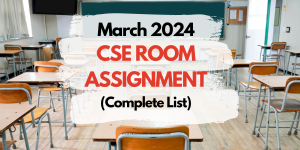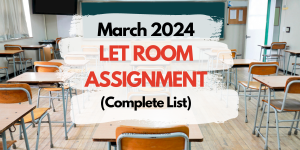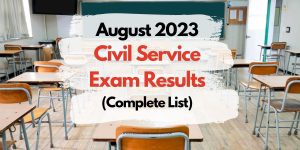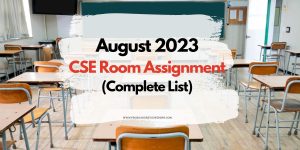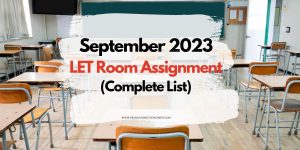This is the Multiples Choice Questions Part 28 of Professional Education. In preparation for the LET Exam, practice, and familiarize every question we have, it might be included in the actual examination. Good luck.
Professional Education Part 28
1. Which practice helps the teacher maximize time for instruction?
a. Employ a reactive approach to discipline
b. Maximize discipline time
c. Avoid classroom routine; they make your students robots
d. Minimize discipline time
Answer: a
2. Which is sound classroom management practice?
a. Be reactive in approach
b. Occupy students with extremely difficult task
c. Be preventive in approach
d. Give students very easy task to lighten their load.
Answer: c
3. A sound advice for classroom managers is “Nip the problem in the world.” What does this mean?
a. Assume a reactive posture in classroom management
b. Be proactive in management approach
c. Reinforce positive behavior.
d. Treat minor disturbance calmly
Answer: b
4. Which seating arrangement has been proven to be effective for learning?
a. Flexible to suit varied activities
b. Fixed arrangement to maximize instructional time
c. A combination of fixed and flexible arrangement
d. Any seat arrangement to suit varied learning styles
Answer: a
5. Which describes her classroom management approach?
Ⅰ. Assertive
Ⅱ. Laissez faire
Ⅲ. Consultative
a. Ⅰ and Ⅲ
b. Ⅱ and Ⅲ
c . Ⅰ only
d. Ⅱ only
Answer: a
6. Is it sound for miss Mabuhay to state clearly before her class that there are some issues which are not up for discussion?
a. Yes, provided the class is informed at an appropriate time
b. Yes, provided the class agrees
c. No, it is undemocratic
d. No, it projects the teachers as a domineering figure
Answer: a
7. On which principle is her class involvement in the establishment of rules based
Ⅰ. Principle of rule ownership level of those concerned
Ⅱ. Principle of appropriate level of those concerned
Ⅲ. Principle of subsidiarity
a. Ⅰ,Ⅱ and Ⅲ
b. Ⅰ and Ⅲ
c. Ⅰ and Ⅱ
d. Ⅱ and Ⅲ
Answer: c
8. To be effective, which is the best time to discuss rules, procedure , reward and consequences based on Miss Mabuhay’s experience?
a. The first days of the school year
b. The middle part of the school year
c. As the need arises
d. integrated in the teaching of the subjects
Answer: a
9. On which belief in class discipline in Miss Mabuhay’s classroom management anchored?
a. It is a shared responsibility of teacher and students
b. It is the ultimate responsibility of students
c. It is achieved only when teacher dominates the classroom
Answer: a
10. To what can you trace Miss Cruz’s class discipline problem
Ⅰ. Absence of established classroom routines
Ⅱ. Absence of clear rules from the start
Ⅲ. Poor seating arrangement
a. Ⅰ and Ⅱ
b. Ⅰ only
c. Ⅱ and Ⅲ
d. Ⅱ only
Answer: a
11. Which proactive technique should Miss Cruz employ?
a. Reward those behaving and punish those misbehaving
b. Single out those misbehaving and detain them after class
c. Separate the boys’ seat arrangement from that of the girls
d. Keep students engaged in a learning task
Answer: d
12. How’s the ripple effect illustrated In the case of Miss Cruz?
a. Miss Cruz gets exhausted at the end of the day
b. The misbehavior of three student s escalates
c. Miss Cruz spends more time disciplining that teaching
d. All students stand up to submit an assignment to Miss Cruz
Answer: b
13. Which is the most effective way of dealing with the three misbehaving students immediately?
a. Assign them to separate seats
b. Call their attention and warm them sternly in the presence of the class
c. Detain them after class
d. Stop the class proceedings then tell the three students you will write letters to their parents
Answer: a
14. To avoid such an unruly scenario, which should Miss Cruz do?
a. Punish those who don’t behave.
b. Project a threatening personality
c. Spell out het rules on procedures at the very start of the class
d. Threaten the misbehaving students with punishment
Answer: c
15. Which statement is TRUE about the questions asked? The question asked? The questions are ________.
a. open-ended
b. convergent
c. probing
d. evaluative
Answer: a
16. Referring to the questions above, which one is a synthesis question?
a. # 3
b. #8
c. #2
d. #5
Answer: b
17. Which is a convergent version of Question #1?
a. Draw a generalization based on the data presented
b. Why do you see the graph?
c. Do you agree with the data presented in the graph?
d. Why or why not?
With what data is the graph concerned?
Answer: d
Which is an evaluative question?
#7
#6
None
#4
answer: c
Is teacher of asking someone to stand up before asking the question in accordance with the principles of questioning technique?
Yes, we are sure of someone to answer the question
No, but it in the case of Teacher A, it is allowable.
No, definitely
Yes and No. It depends on the kind of question we are asking
answer: c
is there any convergent question from #1 to #8?
None
#1
#4
It depends on the student’s answer.
Answer: a

